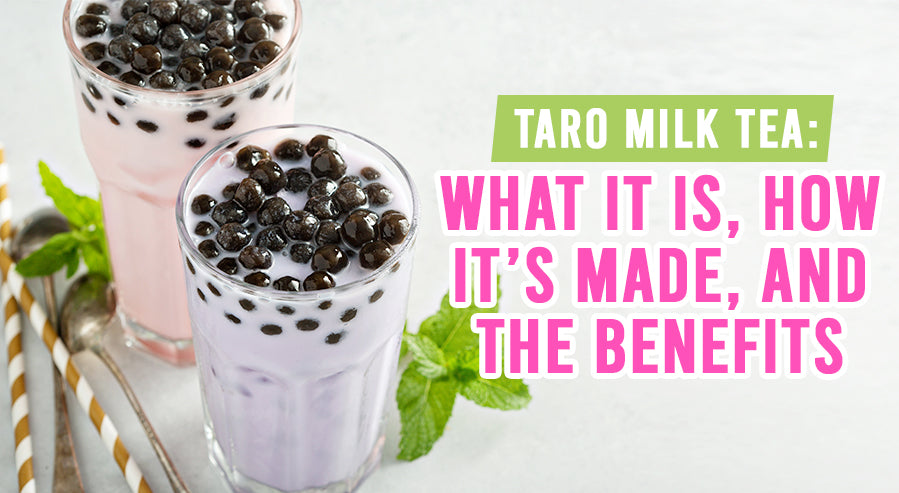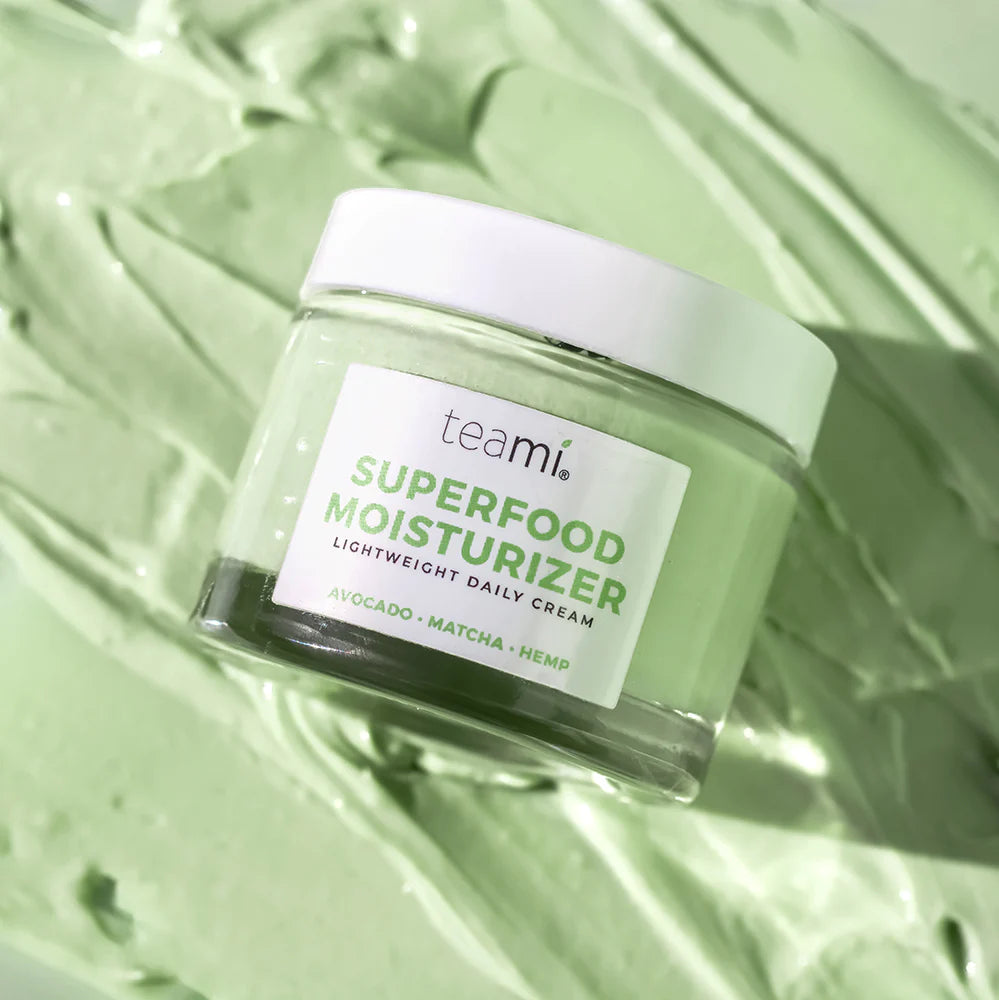Taro Milk Tea: What It Is, How It’s Made, and the Benefits

Many drinks and supplements worldwide have been connected to positive benefits for the human condition. Usually, these supplements are created from certain plants and roots used in Ayurvedic or other traditional medicine. Recently, we have begun merging these healthy substances to create enhanced concoctions to maximize their benefits.
Sometimes this means using 2 separate supplements together or, more likely, finding a way to combine them into a single product. This is easier for some substances than others but is ultimately a viable option for several of the most popular options. What is truly surprising is that this is also being used for certain substances that might be less popular or more obscure to certain demographics.
One supplement that is growing in popularity is taro, though some are less enthused with the taste than others. Despite this, taro has reached several new markets in modern society and has recently been revitalized for its associated health benefits. However, the benefits of taro seem to be best accompanied by other substances that provide greater advantages.
One of the newest fascinations is taro milk tea, which has become a very popular drink among casual drinkers and health enthusiasts. That said, plenty of people do not know what taro milk tea is, let alone what it is capable of doing. Therefore, we feel it is worth evaluating these details so you can make an informed decision.
What is Taro?
Before we can determine what taro milk tea is, we should identify what taro is since it might not be the most recognizable term. Colocasia esculenta, or taro, is a root vegetable that has become the most widely cultivated plant in the Araceae family. The plant originates from Southeast Asia and has been a staple in multiple cultures throughout history.
One of the main cultures to use taro was the Polynesians, especially the Māori of New Zealand. In fact, the Māori language was responsible for the term "taro," though the plant has had several other names from the cultures that used it. The corms that grow from C. esculenta are a culinary staple among African, Oceanic, East Asian, Southeast Asian, and South Asian cultures. It has recently gained popularity in America for its flavor and, most interestingly, its color.

The corms of C. esculenta have a distinctive purple color from the phenolic pigments in the root. The purple color has made taro an "exotic treat" in the eyes of most Americans, who have begun consuming taro-based desserts. The natural sugars in the corms give taro a sweet, nutty flavor, making it very popular in culinary practices.
In many ways, taro is similar to a sweet potato or yam, with a different color and flavor profile. Regardless, taro is known for its culinary uses and has been employed as a medicinal tool. Taro's use in medicine was primarily a Korean concept but has since spread to the Western world. While you will never find a doctor who prescribes taro for a major health condition, the root has certain benefits. The benefits associated with taro have caused people to refine the root into supplements and health drinks. Among the drinks made with taro is taro milk tea, but the question of what that drink is remains.
What is Taro Milk Tea?
Taro milk tea is, as the name suggests, milk tea with taro as one of the primary ingredients. Milk tea is a simple combination of traditional tea and milk, creating a slightly frothier drink. While the origins of milk tea resulted from tea drinkers using milk to alter the flavor of hot tea, it has since evolved into a sort of soft drink. Milk tea is also the main item sold at boba tea shops, which is milk tea that includes small, chewy black balls at the bottom called boba.

Essentially, taro milk tea is the same as the milk tea sold at boba shops, but without the boba (though most people include it). Most taro milk tea is essentially taro boba tea, which is a readily available flavor at most boba shops. That said, people interested in taro milk tea might want to try and make it themselves to control every ingredient. The question is: how is taro milk tea made?
How is Taro Milk Tea Made?
The biggest aspect of taro milk tea that distinguishes it from regular milk tea is the inclusion of taro in the recipe. Adding a root vegetable to something like milk tea can be difficult to wrap your head around, depending on your past experiences. Fortunately, working taro into the recipe is possible but will extend the steeping process somewhat. There are technically 2 ways you can make taro milk tea: using the raw root or taro powder. We will start by outlining a recipe for taro milk tea using raw taro root.

The ingredients you need include:
- 150 grams taro (peeled and cubed)
- 4 teaspoons sugar
- Salt
- 3 tablespoons tapioca pearls (boba)
- ½ cup black tea
- 200 milliliters milk
- 1 teaspoon condensed milk
Once you have gathered your ingredients, you need to follow these instructions:
- Boil the taro root cubes for 20 minutes over medium heat. The final product should be soft enough to be pierced through with a fork. Once the boiling process is complete, discard the water.
- Smash the taro root into an even paste. For the smoothest result, you can use a food processor or blender. While the paste is still hot, add 2 teaspoons of sugar and set the final product aside.
- Add the tapioca pearls and the remaining 2 teaspoons of sugar to a pot of boiling water. Allow the mixture to boil for 5 to 7 minutes or until the boba begins to float (Depending on how soft you want the boba to be, you might have to adjust the boil time). Once finished, remove them from the water and set them aside.
- Steep your black tea and mix it with the taro paste and the condensed milk. Once these ingredients have been mixed, add the boba and milk to it. You can serve the final product hot or cold, so refrigerate it if you prefer the latter.
The recipe is not overly complicated; the hardest part will likely be gathering all the ingredients. That said, there is the matter of the powdered taro version of the recipe. Fortunately, all the powder changes are that you substitute the 150g of taro root with 2 tablespoons of taro powder. This allows you to skip the boiling and crushing of the taro and simply add the powder to your black tea and condensed milk. It also cuts the total amount of sugar you need to 2 teaspoons rather than 4. Ultimately, you will not face much difficulty steeping a cup of taro milk tea, but this recipe does not tell us what benefits the drink offers.
What Are the Benefits of Taro Milk Tea?
While boba tea is not an overly nutritious addition to your diet, taro milk tea can be a little healthier thanks to the taro itself. Taro's use in medicine by the Koreans was not coincidental but because certain properties in taro benefit our health. As a result, the taro milk tea you create retains these properties and can help you maintain a better quality of health.
One of the biggest benefits of taro is its ability to help us manage our blood sugar levels. Glucose is essential to human biology since it gives our bodies the fuel to stay energized. Unfortunately, oversaturating our bloodstream with glucose can seriously affect our bodies and cause conditions like diabetes. The problem is that the cheapest and most accessible food is oversaturated with sugar and additives that can increase blood sugar.
Taro contains 2 essential components that make it a viable tool for reducing blood sugar: fiber and resistant starch. Fiber helps slow the digestion of certain carbohydrates that can cause blood sugar levels to spike. Studies show that high-fiber diets can reduce blood sugar levels by 10 mg/dl in people with type 2 diabetes. The resistant starch in taro cannot be digested and therefore does not contribute to the starches that elevate blood sugar. This means taro's fiber can reduce blood sugar, and the resistant starch provides the nutrients starch offers without the added glucose.

Another important benefit of taro milk tea is that it can improve cardiovascular health. Heart disease is the leading cause of death in the United States, making it a constant threat. Taro root might reduce the risk of cardiovascular disease using the fiber that helps it combat high blood sugar. Fiber has been tied to lower rates of heart disease when consumed in a balanced diet. One study discovered that an additional 10 grams of fiber per day decreased the risk of heart disease by 17%. Fiber's ability to mitigate heart disease is believed to result from its ability to modulate cholesterol levels.
Taro root is a rich source of fiber, containing more than 6 grams per cup (132 grams), which is twice as much as the amount found in 138 grams of potatoes. However, this fiber can also offer a less critical benefit that still improves health. Another issue facing modern society is the obesity epidemic, with a large portion of the population being overweight. While the only way to effect real change for your weight is to maintain a balanced diet and exercise, taro can help enhance the process. According to modern research, taro can help you lose weight by making you feel fuller throughout the day. This means you are less likely to consume more calories throughout the day and slowly lose weight from the reduced dietary intake.
The resistant fiber we mentioned earlier can also contribute. One study discovered that taking 24 grams of resistance starch before meals caused the subjects to reduce their caloric intake by 6%. As a result, they had lower insulin levels and were not consuming as much food to contribute to their body weight. Taro's fiber and resistant starch concentrations mean it is a viable tool for improving your weight loss routine. That said, we want to reassert the caveat that taro cannot be used as a quick solution to weight issues.
It is also worth noting that taro is not the only healthy feature of taro milk tea. You might recall that the recipe called for black tea, a very pure form derived from Camellia sinensis. Like all tea from this plant, black tea is packed with nutrients that can enhance the natural qualities of taro. As a result, your tea can improve your health just like taro can, though this is a subject for a different article.
Finding the Right Blend
Taro milk tea is an interesting beverage that takes a popular beverage and combines it with an exotic root. While the 2 might differ in several ways, they synergize well into a highly effective health drink. While the boba might not be necessary, mixing taro with tea can generate many health benefits you might be interested in reaping.
Fortunately, making your own taro milk tea is not overly complicated, though you might spend a pretty penny gathering the more exotic ingredients. Nevertheless, making your own will likely be healthier than purchasing a cup from an existing milk tea shop. Finding fresh taro root or taro powder should not be difficult, but you might wonder where to find a tea blend not in a sealed tea bag.

We at Teami might not offer taro-related products, but we offer a wide assortment of teas from C. sinensis plants. Our Butterfly Tea Blend offers access to butterfly pea tea's benefits, a fairly unique rival to standard black tea. It also bears a lovely flavor that will mix beautifully with taro to create an excellent taro milk tea with maximized health benefits. We offer other blends that might suit you better, but the best way to find out is to peruse our catalog. We invite you to visit our website and see if there is a blend that seems better for your particular tastes. After all, finding the right blend is a Teami effort.
Subscribe to our Newsletter
Subscribe to our newsletter and get 10% off your first purchase
 Instagram
Instagram



